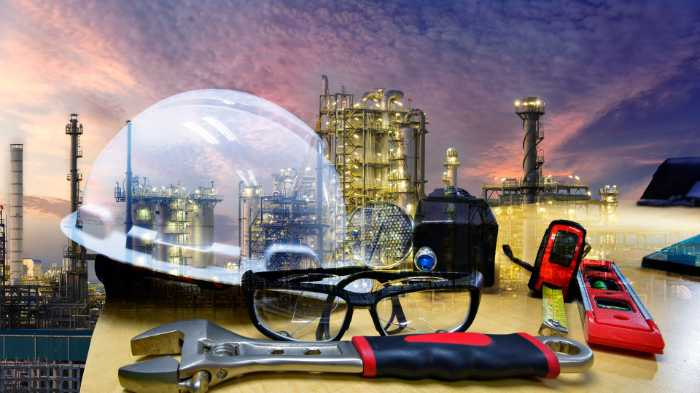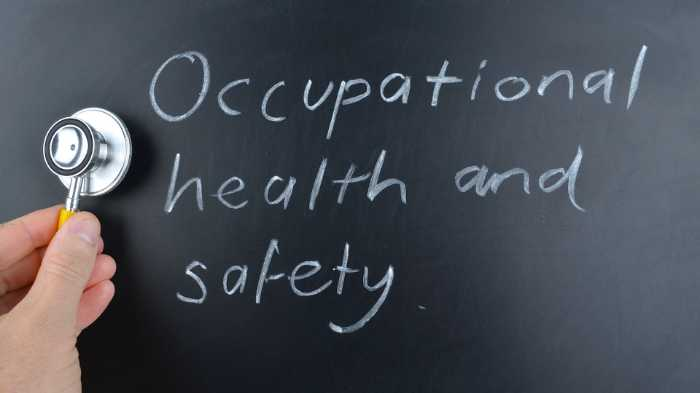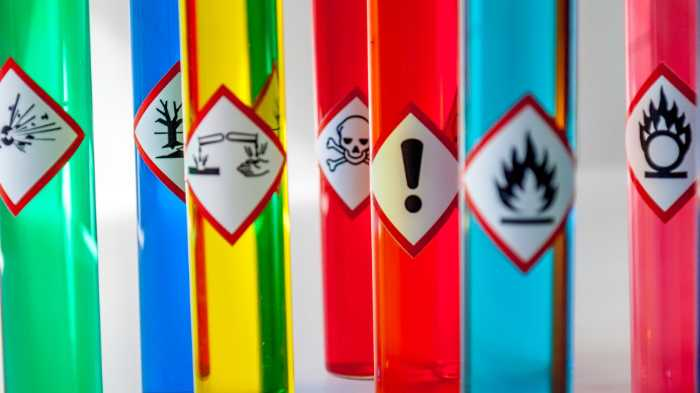
If you’re responsible for the safety of employees in your workplace, then you need to check out our comprehensive guide to occupational health and safety. This toolkit will provide you with all the information you need to keep your workers safe and healthy. We’ll discuss everything from hazard identification to incident investigation, and we’ll give you access to a wealth of resources that will help you create a safe and productive work environment.
- What is occupational health and safety (OHS)?
- The benefits of Occupational health and safety
- 1. Reduced risk of accidents and injuries
- 2. Improved employee productivity
- 3. Lower healthcare costs
- 4. A healthier workforce
- 5. Improving company image
- 6. Reduced absenteeism
- 7. Increased worker morale
- 8. Improved compliance with health and safety regulations
- How to identify workplace hazards?
- 1. Physical Hazards
- 2. Chemical Hazards
- 3. Biological Hazards
- 4. Ergonomic Hazards
- How to ensure occupational safety?
- What is the health and safety legislation?
- How to conduct an incident investigation?
- How to respond to workplace emergencies?
- Why is personal protective equipment necessary for employees?
- Conclusion
- FAQs
- Is personal protective equipment required only for construction workers?
- What does the World Health Organization say about workplace health?
- How are organizations responsible for public health?
- How can the administration ensure that the employees work safely?
- Why is OHS important?
- What are occupational health and safety guidelines
- Terms and Definitions
What is occupational health and safety (OHS)?

Occupational health and safety (OHS) refers to the conditions in which workers are allowed to work. OHS covers a wide range of topics, including ergonomics, stress, workplace violence, and environmental health. Employers are responsible for ensuring that their workers have a safe and healthy work environment, and workers have a responsibility to follow safety guidelines and procedures.
Occupational health and safety is regulated by both national and international laws, and many countries have their own OHS agencies that enforce these laws. In the United States, the Occupational Safety and Health Administration (OSHA) is responsible for enforcing OHS regulations. Companies that violate OHS regulations can be fined or even shut down.
The benefits of Occupational health and safety
Occupational health and safety is the field of medicine that deals with the prevention and treatment of workplace injuries and illnesses. It is important to promote occupational health and safety in the workplace because it can help to reduce the number of workplace accidents and injuries, as well as the cost of workers’ compensation claims. Some of the benefits of occupational health and safety include:
1. Reduced risk of accidents and injuries
One of the benefits of occupational health and safety is the reduced risk of accidents and injuries. By implementing measures such as hazard identification and control, safe work practices, and employee training, businesses can help create a safer workplace. This can reduce the likelihood of accidents and injuries.
2. Improved employee productivity
It has been shown that when occupational health and safety are improved, there is a direct correlation to an increase in employee productivity. This makes intuitive sense- if employees feel safe and healthy at work, they will be able to focus more on their jobs and be less distracted.
3. Lower healthcare costs
Injuries and illnesses are expensive, and the cost of treating them can quickly add up. By proactively addressing safety concerns, you can help reduce the number of injuries and illnesses that occur in your workplace. This, in turn, can lead to lower healthcare costs for your company.
4. A healthier workforce
A healthier workforce is one of the many benefits of occupational health and safety. A workforce that is healthy and injury-free is able to work more efficiently and effectively.
5. Improving company image
A company’s image is its identity in the public eye. It’s how customers, clients, and the general public perceive the business. Creating and maintaining a positive company image is essential for any business that wants to be successful. There are many ways to improve a company’s image, and one of them is by investing in occupational health and safety.
By ensuring that employees are safe and healthy, businesses can show that they care about their employees and that they are committed to maintaining a safe work environment. This can help to attract new customers and clients, as well as retain existing ones.
6. Reduced absenteeism
Absenteeism is when an employee is absent from work. It can be due to sickness, personal issues, or simply because the worker does not want to come in. Whatever the reason, absenteeism can have a negative impact on a business. Not only does it reduce productivity, but it can also lead to increased costs.
For example, if a worker is absent for an extended period of time, the company may need to hire a replacement. In addition, absenteeism can create a negative work environment, as other employees may need to pick up the slack.
7. Increased worker morale
Increased worker morale is often cited as a benefit of improved occupational health and safety conditions. When workers feel that their employer is taking steps to protect their health and safety, they often feel more valued and appreciated.
This can lead to increased productivity and motivation, as well as higher retention rates. In addition, happy employees are often more likely to spread positive word-of-mouth about their company, which can attract new talent. Consequently, creating a safe and healthy work environment can have a ripple effect that extends far beyond the individual worker.
8. Improved compliance with health and safety regulations
When workers are aware of the potential risks in their workplace and the importance of adhering to health and safety regulations, they are more likely to comply with these regulations. This, in turn, can lead to improved safety in the workplace and a reduction in accidents and injuries.
How to identify workplace hazards?

One of the most important things you can do to stay safe at work is to be aware of the hazards around you. There are four main types of workplace hazards: physical, chemical, biological, and ergonomic.
There are a number of ways to identify workplace hazards, including conducting a risk assessment, consulting with health and safety professionals, and studying accident reports. Once workplace hazards have been identified, employers can develop safety protocols and procedures to mitigate the risks.
1. Physical Hazards
Physical hazards are those that can cause physical harm. They are some of the most common workplace hazards and include things like slips, trips and falls, electrical hazards, and noise. To help prevent these types of accidents, it’s important to learn how to identify physical hazards in your workplace.
One way to do this is to look for objects or materials that could potentially cause harm if they were to come into contact with someone. For example, if there are loose wires on the floor, this could create a trip hazard.
2. Chemical Hazards
Chemical hazards can take many forms, from gases and vapors to dust and fumes. In order to protect yourself and your coworkers, it is important to be able to identify potential chemical hazards in the workplace.
One way of doing that is to look for warning signs. Many chemicals will have warning labels that indicate the potential hazards associated with them. If you see a warning label, take the time to read it carefully and familiarize yourself with the risks.
You should also be alert for areas that are posted with warning signs or that are roped off. These areas may contain hazardous materials that require special precautions.
If you are unsure whether a substance is hazardous, you can ask your supervisor or consult a safety data sheet (SDS). SDSs provide information on the physical and chemical properties of a substance, as well as its hazard classifications. They can help you to understand the risks associated with a particular substance and how to safely work with it.
3. Biological Hazards
Potential biological hazards can include anything from bacteria and viruses to fungi and parasites. These hazards can come from a variety of sources, including contaminated food or water, contact with infected animals, or contact with an infected person.
In some cases, simply being in an area where there has been a recent outbreak of a contagious disease can put you at risk.
When it comes to protecting yourself from biological hazards at work, there are a few key things to keep in mind. First, always practice good hygiene. This includes washing your hands often, avoiding touching your face, and keeping your work area clean.
Second, be sure to follow any safety protocols that have been put in place by your employer. This may include wearing Personal Protective Equipment (PPE) or following specific procedures for handling potentially hazardous materials.
Finally, stay up to date on vaccinations. This is especially important if you work in a healthcare setting or if you regularly travel for work. By taking these precautions, you can help to minimize your risk of exposure to biological hazards.
4. Ergonomic Hazards
Ergonomic hazards are those that relate to the interaction between a person and their work environment. These hazards can cause workers to experience musculoskeletal disorders (MSDs), which are injuries or conditions that involve the muscles, tendons, nerves, joints, or other tissues of the body.
MSDS can be caused by repetitive motions, awkward postures, or excessive force. ergonomic hazards can be found in any type of work environment, from office settings to manufacturing plants.
There are a few different ways to identify ergonomic hazards in the workplace. One is to observe workers and look for signs of discomfort or strain. Another is to ask workers about their experiences with pain or discomfort on the job. Finally, worksites can be evaluated using ergonomic assessment tools that identify factors that may contribute to MSDs.
Once ergonomic hazards have been identified, they can be addressed through a variety of methods, such as redesigning workstations, modifying work procedures, or providing workers with ergonomically designed tools and equipment. By taking these steps, employers can help reduce the risk of MSDs in their workplace.
How to ensure occupational safety?
Keeping yourself safe while on the job is known as occupational safety. It is important to be aware of potential hazards while working and to know how to protect yourself. There are a variety of ways to ensure occupational safety for your workforce, and some of the most important include:
- Create a safety policy and make sure all employees are aware of it.
- Conduct regular safety audits and address any hazards that are found.
- Provide employees with the necessary safety equipment and train them on how to use it properly.
- Enforce safe work practices and procedures.
- Investigate any accidents or incidents that occur and take steps to prevent them from happening again.
- Encourage employees to report any unsafe conditions or practices.
- Offer incentives for employees who follow safety procedures.
By following these tips, you can help ensure occupational safety in your workplace.
What is the health and safety legislation?
Health and safety legislation is a set of laws that govern the health and safety of employees in the workplace. These laws are designed to protect workers from hazardous conditions and to provide them with a safe and healthy work environment. The main piece of health and safety legislation in the United States is the Occupational Safety and Health Act, which was enacted in 1970.
The OSHA sets forth specific health and safety rules that employers must follow, and it also establishes health and safety committees to oversee compliance with these rules. Workplace safety is a paramount concern for employers, and they are required to take all necessary steps to ensure that their employees are protected from harm.
How to conduct an incident investigation?
According to the Occupational Health and Safety Act of 1970, an employer has the responsibility to provide a safe and healthful workplace for employees. This includes ensuring that hazards are identified and controlled, providing aid training, and enforcing health and safety standards.
However, when an incident does occur, it is important to conduct a thorough investigation in order to determine the root cause of the problem and identify preventive measures that can be put in place to avoid future incidents.
The first step in conducting an incident investigation is to gather information about the event. This includes details about the time, date, location, and type of incident, as well as any possible injuries or workplace fatalities that occurred.
It is also important to gather information about the hazards present in the workplace and the worker population at the time of the incident. Once this information has been gathered, it can be used to identify potential causes of the incident.
After potential causes have been identified, it is important to evaluate them in order to determine which one is most likely responsible for the incident. This can be done by looking at the major consequences that could result from each potential cause. Once a likely cause has been determined, corrective and preventive measures can be put in place to reduce the risk of future incidents.
How to respond to workplace emergencies?
In any workplace, it’s important to be prepared for emergencies. Here are some tips on how to respond to common workplace emergencies:
- Remain calm and assess the situation
- If there is a fire, evacuate the building immediately and call 911. Do not try to fight the fire yourself.
- If someone is injured, call 911 and try to stop the bleeding if possible. Do not move the person unless they are in danger of further injury.
- If you are locked out of the building, call security or your supervisor. Do not try to break into the building yourself.
- If there is a power outage, turn off all electrical equipment and unplug appliances. Do not use candles or lanterns if possible. Wait for the power to come back on before using electrical equipment again.
In any emergency, it is important to follow the instructions of your supervisor or the designated emergency response team. By following these simple steps, you can help to keep yourself and your colleagues safe in the event of an emergency.
Why is personal protective equipment necessary for employees?
According to the Occupational Safety and Health Administration, personal protective equipment (PPE) is “specialized clothing or equipment worn by an employee for protection against infectious materials.”
In other words, personal protective pieces of equipment are necessary in order to create safe and healthy workplaces. There are many federal laws that mandate the use of PPE in certain industries, such as the construction industry, where safety hazards are always present.
PPE is not only necessary in order to prevent injuries, but also to prevent the spread of occupational diseases. By enforcing the use of PPE, we can create a safe and healthy environment to protect the worker population.
Conclusion
An effective safety toolkit should include the tools necessary to identify and control hazards, provide aid training, and enforce health and safety standards. By following these simple steps, employers can help to create a safe and healthy workplace for their employees. In addition, it is important to be prepared for emergencies by having a safety program in place for how to respond to common workplace emergencies. Lastly, PPEs must be worn in order to protect employees from injuries and the spread of occupational diseases.
FAQs

Is personal protective equipment required only for construction workers?
No, PPE is not required only for construction workers. All workers who perform physically demanding tasks or who are exposed to potential workplace health hazards are required to wear personal protective pieces of equipment. The Occupational Safety and Health Act and the Federal Workers Compensation Act are two examples of federal laws that require workers to wear PPE.
These laws are designed to protect workers from occupational disease, work-related injury, and exposure to hazardous working conditions. PPE is also often required by industrial hygiene standards, which are designed to protect workers from exposure to harmful working environments. In addition, many companies have worker involvement programs that require workers to wear PPE when performing certain duties.
What does the World Health Organization say about workplace health?
The World Health Organization (WHO) provides guidance on workplace health, with a focus on workers’ health and safety. WHO recommends that workplaces be safe and healthy, with measures in place to protect workers from health risks. This includes providing a safe working environment, ensuring safety responsibilities are understood and met, and implementing safety initiatives and programs.
The WHO also recommends addressing mental health in the workplace, as mental health issues can lead to safety risks. By following WHO guidelines, workplaces can create a safe and healthy environment for workers.
How are organizations responsible for public health?
Organizations are responsible for public health in many ways. They are required to provide a safe workplace, free from hazardous materials and conditions. They must also follow safety standards set by government bodies, such as the National Institute for Occupational Safety and Health.
In addition, they must keep records of all accidents and injuries, and take steps to control the spread of infectious diseases. Finally, they must provide first aid and protective clothing for employees who work in hazardous conditions.
How can the administration ensure that the employees work safely?
By enforcing safety policies and providing training on how to work safely.
Why is OHS important?
OHS is important because it helps to protect workers from injuries, illnesses, and death. It also helps to ensure that workplaces are safe and healthy for both workers and visitors.
What are occupational health and safety guidelines
There are occupational health and safety guidelines for a variety of industries. Some industries, like construction, have very specific guidelines that must be followed in order to ensure the safety of the workers. Others, like healthcare, have more general guidelines that should be followed in order to minimize the risk of injury or illness.
Terms and Definitions
- Occupational Health Specialist Resources for Beginners: These are resources designed specifically for those starting out in the field of occupational health. They can include books, online courses, workshops, seminars, and educational materials from organizations and agencies dedicated to providing information on occupational health topics. They usually cover topics such as workplace safety hazards and preventative measures, ergonomics, hazardous materials handling and disposal, injury prevention, medical surveillance programs, and other related topics.
- OH&S Regulations: Occupational health & safety regulations are laws that govern the safety of workers on the job. These regulations cover a wide range of topics such as hazard identification; engineering controls; safe work practices; PPE requirements; hazardous material handling procedures; emergency response plans; reporting of incidents and injuries; training for workers in safe work practices; employee rights and responsibilities regarding OH&S matters; environmental protection standards; enforcement mechanisms for compliance with OH&S regulations; record-keeping requirements for employers regarding injuries or illnesses related to the workplace environment. The purpose of these regulations is to ensure that employers provide a safe working environment that meets minimum standards established by the government.
Savvy stakeholders are also reading…
What is Your Personal ESG Score and Why Should You Care?
Individual Climate Action: How to Make a Difference
The Top 10 Examples of Sustainable Marketing
Learn How to Manage Your Finances

Dean Emerick is a curator on sustainability issues with ESG The Report, an online resource for SMEs and Investment professionals focusing on ESG principles. Their primary goal is to help middle-market companies automate Impact Reporting with ESG Software. Leveraging the power of AI, machine learning, and AWS to transition to a sustainable business model. Serving clients in the United States, Canada, UK, Europe, and the global community. If you want to get started, don’t forget to Get the Checklist! ✅
